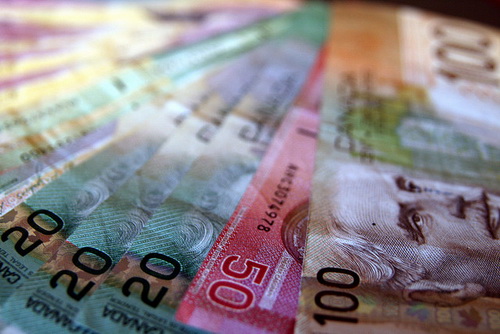When my dad was based in Shanghai, it was a simple matter to top up my Canadian bank account. He was paid partly in dollars, so he would transfer money directly to my foreign account and I’d repay him in renminbi. But now that he’s relocated for work, I had to find another way to send money to my Canadian account. After asking around, I was told that the most straightforward way was to go to the bank with a Chinese national and have them help me transfer the money. Here’s how it went.
I’d investigated a couple of other options before deciding on this course of action, but they were too mafan for my purposes. I only need to top up my Canadian account very occasionally, usually after I pay for flights with my credit card.
Western Union
The first option was Western Union, which an American friend told me she used regularly to pay off her student loans. However, Western Union only allows money to be sent in USD or EUR, neither of which was convenient for me. However, this could be a good option for US and EU citizens. The upside is that you can send a money transfer to a recipient or direct to bank without a Chinese intermediary. I’m not sure how much commission fees are, though they depend on how the transfer amount. You’ll find a list of Western Union branches on their website.
Sending Money from Your Chinese Bank Account
The same friend mentioned that you can also send money from your own Chinese bank account, but that requires a raft of documents. I asked the Finance department at my company and they got back to me with this big laundry list:
- An employment letter
- A copy of the employment contract
- A copy of your passport
- A 12-month salary history with tax deductions
- A certificate from the Tax Bureau
In addition, you have to be have been employed full-time with the same company for at least a year. Clearly, this wasn’t going to work for me.
Withdrawing Money from UnionPay-Compatible ATMs Back Home
A Filipino friend told me he used a simple solution. He created a spare Bank of China account (though it can be any bank) and gave the debit card to his mom in the Philippines. To top up the account, he can transfer money directly to it online, by phone, or through a Bank of China ATM machine. His mom can then withdraw money from any UnionPay-compatible ATM machine in the Philippines.
He says charges are very minimal – RMB 10 per withdrawal for Bank of China, then PHP 200 (about RMB 30) for the local bank in the Philippines. Maximum withdrawal is around RMB 3,000 each time. The last time he went home, my friend was also pleasantly surprised to find that some stores accept UnionPay debit cards, so he didn’t have to pay any charges.
Having traveled to Canada before, my friend said that many Canadian banks also accept UnionPay cards for withdrawals (including BMO Bank of Montreal, CIBC, and Scotiabank). He didn’t remember what the fees were.
This was good to know, but it still didn’t resolve the issue of my needing to pay off my Canadian credit card fairly soon. So I decided to go with the quickest option.
Having a Chinese National Transfer Money for You
In the end, I asked someone from Finance to accompany me to the bank. With a shenfenzheng, Chinese nationals can transfer up to USD 50,000 per year overseas. Make sure you have the following:
- Your foreign bank account number
- Your foreign bank’s SWIFT code, an international identifier code made up of letters (this should be listed on your bank’s website; ask a rep if you’re unsure)
- The address of your local bank branch
- The home address linked to that bank account
We went to China Merchants Bank, but the process should be fairly similar in all banks. Here’s how we did it, step-by-step:
- The transfer has to be done from the Chinese national’s bank account, so I took out the amount I wanted to send in RMB and my colleague deposited it into her account.
- The bank converted the amount into CAD using the daily exchange rate.
- We filled out a form on a computer with the information listed above. When my colleague called ahead, the bank didn’t mention the need for a SWIFT code and my bank branch’s address, so I had to look those up on the spot. The SWIFT code is actually optional, but the bank employee explained that not having it would delay the transfer since they’d have to manually look up it up.
- Once the form was filled out, we took a number and waited to be processed.
- The clerk at the window printed out a physical form with the information we filled in earlier and had us check it. There was a mistake with the bank branch address, which my colleague had to correct herself because it was her bank account we were sending the money from; I wasn’t even allowed to help her by writing it myself, so I ended up typing it out on my phone and my colleague copied the correct address on a new piece of paper.
- It took around 30 minutes for all the forms and papers to be corrected and signed. At the end, the clerk gave us a copy of the form, the address correction, and a summary of the commission fees (which came out to RMB 250).
Even with the minor delays, the whole process went pretty smoothly. My colleague said that Bank of China has the lowest basic commission charges (RMB 80 instead of RMB 100), so we should try there next time. I’m not sure how the RMB 250 commission charges I paid break down, so I’ll clarify that with her after the holidays. I’m not sure how long it normally takes the money to reach my foreign account since we sent the money just before the Chinese New Year break, so that’s also something I’ll find out for the future.
Have you tried any of the methods above? Do you have an alternative way of getting money out of the country? Let us know in the comments.
Photo: Duckie Monster (Flickr)




